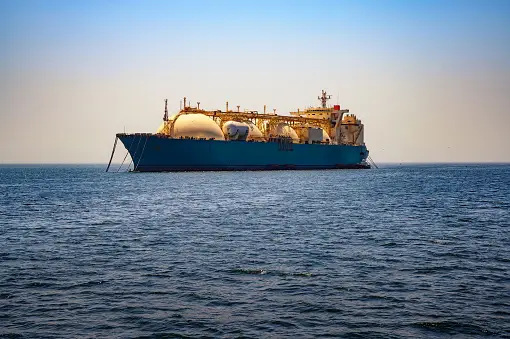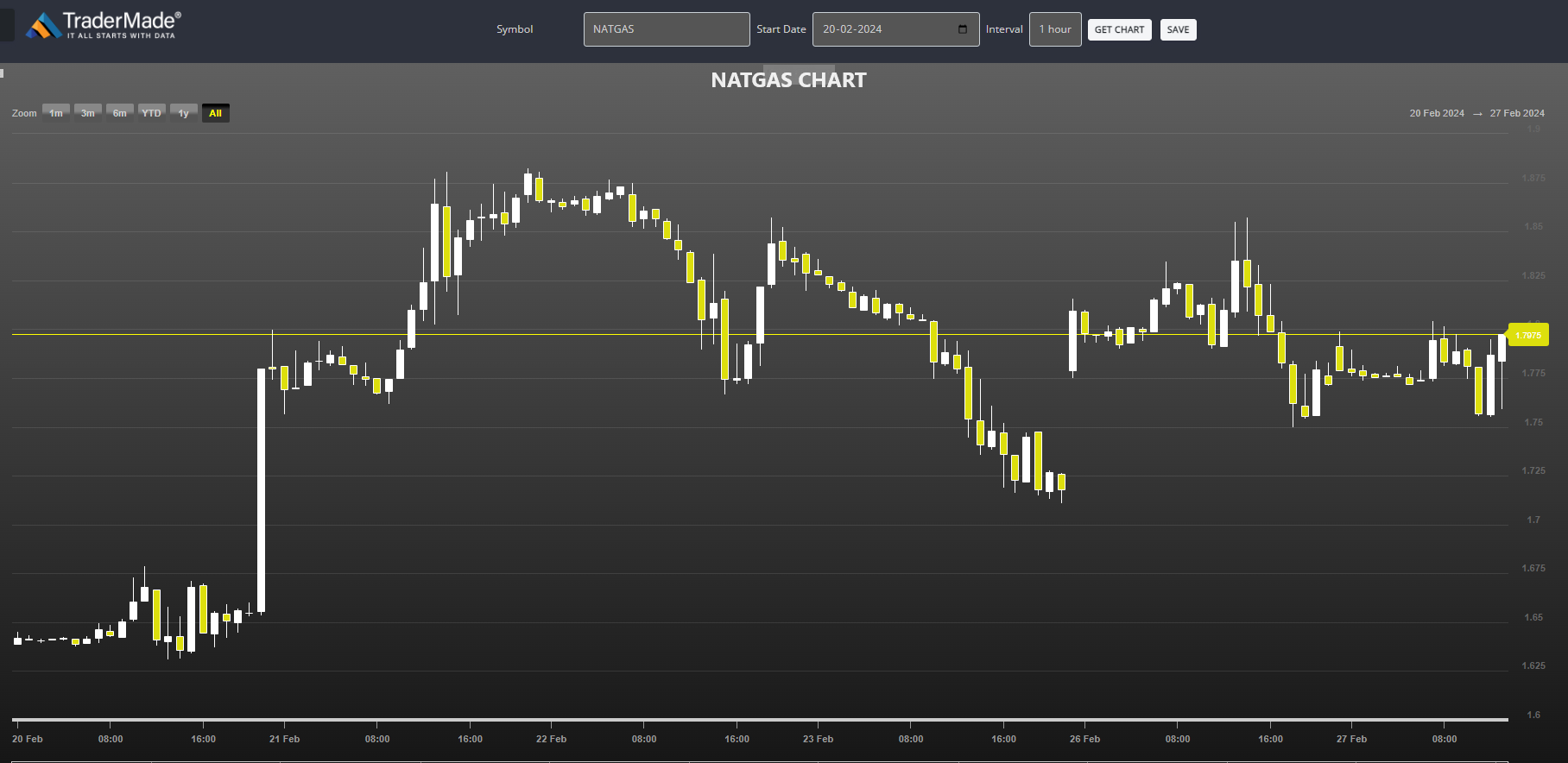
Natural Gas Rebounds After Production Dips
London: 27 February 2024 (TraderMade): Natural Gas rebounds after production dips and ahead of contract expiration, but warm weather and high storage levels weigh on prices.
Natural Gas (NATGAS) surged by about 13.12% over the last week and traded at $1.854/MMBtu on 27 February (Tuesday).
Key Takeaways
- Modest uptrend: NATGAS price increased 13.12% over the past week, despite daily fluctuations.
- Mixed market sentiment: Declining production and potential LNG demand offered some support, while warm weather and high storage levels limited significant price surges.
- Technical factors: Upcoming contract expiration and trader positioning may have influenced price movements.
- Short-lived rally: Warm weather and high storage may limit near-term price increases.
- Balancing act: Production cuts and rising LNG demand in the future could impact prices in opposing directions.
Natural Gas (NATGAS) Sees Modest Uptrend Despite Mixed Signals
Natural gas prices (NATGAS) experienced a modest uptrend over the past week, closing at $1.854 on 27 February 2024. This represents a 13.12% increase from the opening price of $1.639 on 20 February.
Key observations
- Price volatility: While the overall trend was positive, the week saw price fluctuations with daily highs and lows.
- Positive close: Despite intraday dips, NATGAS managed to close higher on most days, indicating some underlying buying pressure.
- Limited upside: The gains were relatively modest, suggesting a balancing act between factors influencing the market.

Possible explanations for the trend
- Mixed market sentiment: News of declining production and potential LNG demand increase could have offered some support, while warm weather forecasts and high storage levels might have capped significant price surges.
- Technical factors: Upcoming contract expiration and positioning by traders could have also contributed to the price movements.
Overall, the recent trajectory of NATGAS suggests a market navigating both bullish and bearish forces. While the upward trend might indicate a potential shift, it's crucial to monitor upcoming data and weather forecasts for a clearer picture of the future direction.
Production Dip and Contract Expiration Drive Short-Lived Rally
Natural gas prices experienced a brief surge on Monday, with March futures contracts rising as production dipped and traders positioned themselves for contract expiration.
However, the rally was tempered by continued warm weather and high storage levels, which are keeping a lid on prices.
The rebound followed two consecutive weeks of losses for the March contract, which settled at $1.659/MMBtu on Monday. Warmer-than-normal temperatures across much of the United States have significantly reduced heating demand, putting downward pressure on prices.
Production Dips Slightly
Production also played a role in Monday's price movement. According to estimates, production clocked in at around 103 Bcf/d (Billion cubic feet per day), slightly lower than the previous week's average and significantly down from record levels reached earlier this year.
This decline, coupled with the upcoming contract expiration, contributed to the upward tick in prices.
Warm Weather and High Storage Levels Limit Upside Potential
However, the rally may be short-lived. Analysts expect mild weather to persist throughout most of the current trading week and into March, limiting natural gas demand for heating purposes.
Additionally, storage inventories remain at historically high levels, further pressuring prices.
Warm Weather Persists
Forecasts for continued warm weather are expected to limit natural gas demand for heating in the near term.
High Storage Levels Weigh On Prices
Storage inventories remain at historically high levels, adding to the downward pressure on natural gas prices.
Production Cuts vs. Rising LNG Demand: A Balancing Act
While some analysts believe the low-price environment could lead to production cuts by some companies, others anticipate a surge in demand later in the year as new liquefied natural gas (LNG) export facilities come online along the Gulf Coast.
Production Cuts Possible
Low prices could incentivize some companies to cut production, potentially helping to tighten supplies and boost prices.
Rising LNG Demand Expected
Increased demand for LNG exports later in the year could eventually lead to higher prices.
Overall, the natural gas market remains in a precarious position. While production dips and technical factors offered a temporary reprieve, the underlying fundamentals of warm weather and high storage levels continue to weigh heavily on prices.


